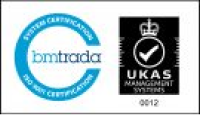Clarifying a conclusion of unlawful killing: R (Glaister & Carr) v HM Assistant Coroner for North Wales [2025] EWHC 167 (Admin)
![Clarifying a conclusion of unlawful killing: R (Glaister & Carr) v HM Assistant Coroner for North Wales [2025] EWHC 167 (Admin)](https://www.parklaneplowden.co.uk/app/uploads/2024/11/Georgia-Banks-Banner.jpg)
Benjamin David Leonard was only aged 16 when he fell to his death from the Great Orme, North Wales, while on an Explorer Scout weekend away in August 2018. The weekend away was supervised by volunteer scout leaders, including the Claimants in this judicial review claim, Mr Glaister (Explorer Scout Leader) and Ms Carr (Assistant Explorer Scout Leader).
On a walk up the Great Orme, the group became separated, with Ms Carr leading and assuming Mr Glaister would round up Benjamin and two other scouts. Mr Glaister did not see them at any stage. Ms Carr saw Benjamin at the top on the grassy hills. She did not ask him to re-join the group. There had been no risk assessment conducted for the activity. Benjamin, in the hope of making it down the mountain more swiftly, followed animal tracks to the cliff edge and fell, suffering a brain injury.
The inquest was not straightforward; it involved two failed attempts in 2020 and 2022. When it eventually proceeded, it involved ten interested parties (including Mr Glaister and Ms Carr), 32 hearing days, live evidence from 20 witnesses and even a hearing held on a Sunday.
Finally, in August 2024, the inquest ended with the jury recording a conclusion of “unlawful killing by the Explorer Scout Leader and Assistant Explorer Scout Leader contributed to by neglect of the Scout Association”.
Mr Glaister and Ms Carr brought claims by way of judicial review against the Assistant Coroner for North Wales culminating in this decision of the High Court.
The conclusion of unlawful killing
The case focussed around three of the six elements required for gross negligence manslaughter as outlined in R v Broughton [2020] EWCA Crim 1093 at paragraph 5:
- Element (iii): establishes a threshold of “serious and obvious risk of death” at the time of breach. “An obvious risk is one that is present, clear, and unambiguous. It is immediately apparent, striking and glaring rather than something that might become apparent on further investigation”.
- Element (iv): it must have been reasonably foreseeable at the time of the breach of the duty, that the breach gave rise to a serious and obvious risk of death.
- Element (v): the breach of duty caused or made significant contribution to the death of the victim.
Justice Fordham also considered R v Rose [2017] EWCA Crim 1168, which establishes thata “serious and obvious risk of death” must exist, and is to be assessed with respect to knowledge, at the time of the breach of duty. Therefore, information that the Claimants would have been aware, had they performed the duty that they breached, is excluded. Taking such information into account has been described as falling into “the Rose Trap”.
The Court also referred to R v Kuddus [2019] EWCA Crim 837 which clarifies that a foreseeable chance that risk of death might arise is not sufficient to establish a “serious and obvious risk of death”.
Serious and obvious risk of death does not require “imminence”
Both Claimants submitted that the only thing that gave rise to a foreseeable serious and obvious risk of death, was the action of Benjamin going near to the steep cliffs. They argued that prior to that point, there could be nothing more than a Kuddus chance of risk. As there was no evidence that either Claimant had been aware that Benjamin was near to the cliff at a time they could have intervened, they argued that unlawful killing could not reasonably be left to the jury.
Justice Fordham did not agree that a “serious and obvious risk of death” could only arise when Benjamin was near to the cliffs. He determined that the Claimants’ analysis incorrectly introduced imminence into the threshold of “obvious and serious risk of death”. Justice Fordham did not agree that imminence was already required by case law, and nor could he see the logic of introducing it.
Obvious information avoids the Rose Trap
The Claimants also contended that the evidence could not support a finding by a properly directed jury of reasonable foreseeability of serious and obvious risk of death without falling into the Rose Trap.
In relation to Mr Glaister, the Court found that on a possible view of the facts, his conduct regarding planning and instruction as Scout Leader meant that a finding of unlawful killing could safely be left to the jury. Likewise, in relation to Ms Carr, the conclusion could safely be left to the jury based on her conduct when she saw Benjamin and the other scouts on the grassy tops prior to Benjamin’s fall.
Justice Fordham considered that it was not necessary to attribute them knowledge in respect of what would or would not have been known at the time of the breach of duty, because the dangers posed by the terrain of the Great Orme were obvious to them. Thus, the Rose Trap was avoided.
The question of anonymity on the Record of Inquest
Both Claimants sought to quash the wording of Section 4 ROI which identified them by their roles as “Explorer Scout Leader” and “Assistant Explorer Scout Leader”. They submitted that their identification was contrary to s.10(2) Criminal Justice Act 2009, which prohibits the determination of how, when and where the deceased came by their death being framed in a way that would determine, or appear to determine, any question of criminal or civil liability on the part of a named person.
Justice Fordham found against the Claimants in this respect. He considered that the Claimants’ arguments would require the Assistant Coroner, in some circumstances, to require deliberate ambiguity where the jury reaches a conclusion for unlawful killing. The Court concluded that the law does not mandate ambiguity but allows clarity.
Justice Fordham further emphasised that an inquest is not about apportioning blame, it is about full and fearless fact-finding. This means that there will be occasions that require the naming of identifiable individuals against whom a finding of unlawful killing relates, as in this case. Even when that does happen, the inquest has not determined criminal or civil liability against that person, and the public should be expected to understand that.
Conclusion
The Court’s consideration of the lawfulness of directions and summing up to the jury have not been addressed in this short summary. Suffice to say, although not perfect, Justice Fordham could not find any reasons that the Assistant Coroner’s directions or summing up to the jury were so deficient as to render the jury’s conclusions on unlawful killing unsafe.
For that reason, and the reasons outlined above, the claims for judicial review failed.
Judgment available here.














